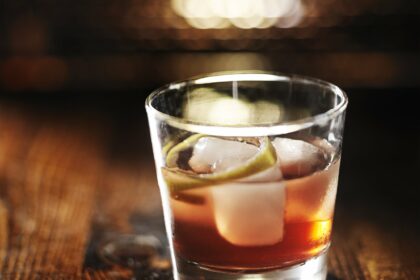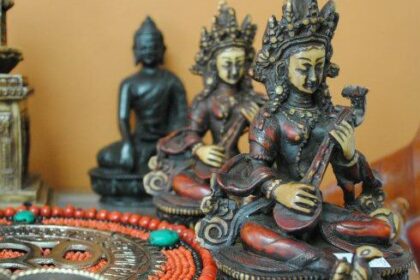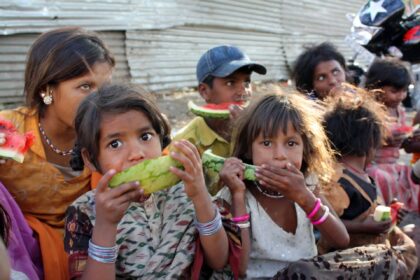
Today is the final class in my six-week PhotoUno Photography II course in New York City, and the focus is effectively using Bulb Mode and understanding the difference between shooting in RAW and JPEG. My instructor for the day isn’t Patricia but a woman named Romina, as I’m making the course up after having to miss it for work. After going over the previous week’s homework — creating a “story” using thoughtfully sequenced photos — we begin.
Understanding Bulb Mode
If you try to get your shutter speed slower (higher) than 30 seconds, you may notice it switches to something called Bulb. What this allows the photographer to do is choose any shutter speed they want — meaning the shutter can be open for longer and you can potentially make your photo more exposed — which is great for taking photos of stars, lightning, fireworks, night shots and painting with light. To understand Bulb Mode, it’s important to grasp the function of shutter speed (if you a need a refresher on manual mode, please read Mastering Your Camera’s Manual Mode and then return to this post).
Being able to leave your shutter open longer in Bulb Mode works especially well at night when you don’t have the sun to give you light. Instead you can use the stars, which, although bright, are very far and don’t completely illuminate a setting. Leaving the shutter open longer allows for more light to expose the photo. You can determine how long you’ll need to leave your shutter open by first trying 30 seconds and seeing what kind of photo you come out with. If the photo is really bright you may want to speed it up. If the photo is really dark you might want to slow it down.
Tip: Slower shutter speeds mean there is an increased possibility of having camera shake. To reduce this, use a tripod.
Tip2: When using a really long exposure you probably won’t want to stand around with your finger on the shutter for the whole time. For these it’s smart to invest in a cable release.

To help the class better understand Bulb Mode, Romina has us set our ISOs to 100 to reduce noise, then our shutters speeds to 30 seconds. From there, we adjust our aperture accordingly. We take a test photo to see if there is enough light, then bump the shutter to Bulb Mode for a 60 second shot. Because we doubled the shutter speed, we now need to adjust the aperture one full stop (3 clicks) to allow in less light. The math for this was confusing to me at first, but essentially if you’re multiplying your shutter speed by two you’ll need one more stop of light. Interestingly, we’re able to get the same lighting for both the 30-second and 60-second shot when adjusting our aperture accordingly.
So, when taking these stellar night shots, what format should you be shooting your photos in? For those who are used to JPEG, you may want to consider switching to RAW. When you take a RAW photo you’re getting all of the data captured by the camera’s sensor, which means you can correct issues later on in Lightroom and Photoshop. Moreover, these images come out higher in quality overall, which is especially important if you want to print — not to mention you can convert them to JPEG later on.
That being said, it’s important to remember that it’s not a universal format, so you’ll need a program — such as the above-mentioned Lightroom and Photoshop — to open and edit them. Additionally, because there’s more information in these photos they will take up more space in your memory card and on your computer (although a cloud-based storage tool, like SmugMug, can help). Once you have your photos edited to the way you want them, it’s time to showcase your work. Romina provides a number of examples, including Instagram, Pinterest, WordPress, Tumblr and, if you want to sell them or need a lot of space, the above-mentioned SmugMug.
Do you shoot long-exposure photography? What tips would you add? Please share in the comments below.
This post is part of an Epicure & Culture original series, Behind The Lens.
Also Check Out:
Behind The Lens: Bracketing, HDR And How To Tell Delicious Culinary Stories Through Photography
Behind The Lens: How To Use Lighting For Composition And Storytelling In Photography
Epicure & Culture’s Wanderlust-Inducing Travel Photography
Jessica Festa
Latest posts by Jessica Festa (see all)
- A Culturally-Immersive Adventure In Mongolia’s Altai Mountains - Jul 8, 2023
- This Recipe Sharing Platform Supports Women In The Culinary Industry (Labneh Recipe Included!) - Nov 5, 2020
- Hiking The Mohare Danda Community Eco-Trek In Nepal - Jun 3, 2020
- 6 Important Questions For Choosing A Responsible Yoga Retreat - May 18, 2020
- How To Create & Grow A Profitable Blogging Business (Ethically) - Jan 18, 2020




